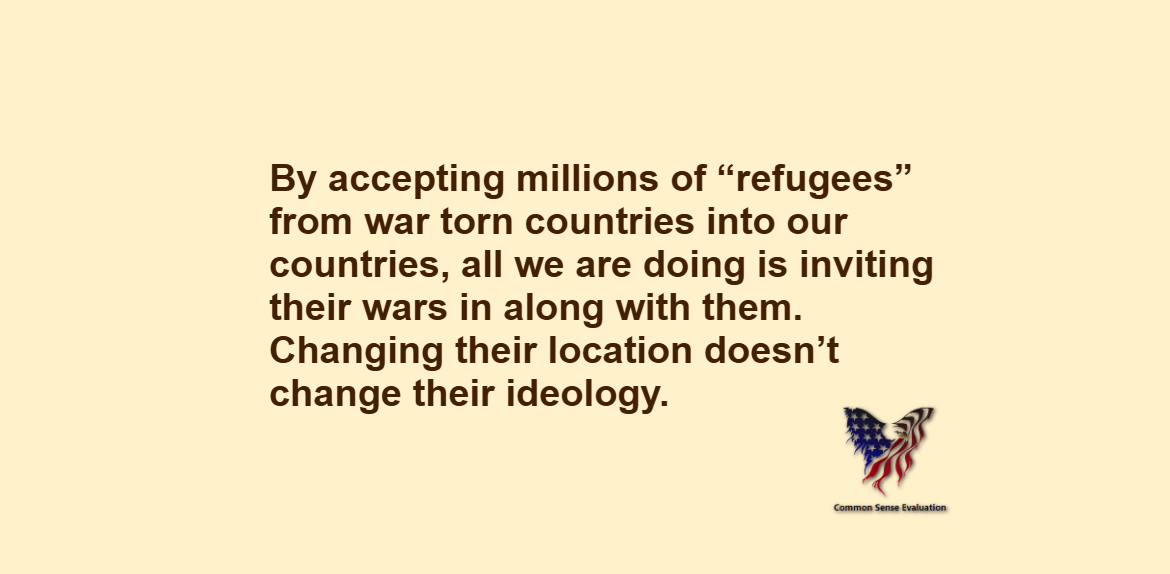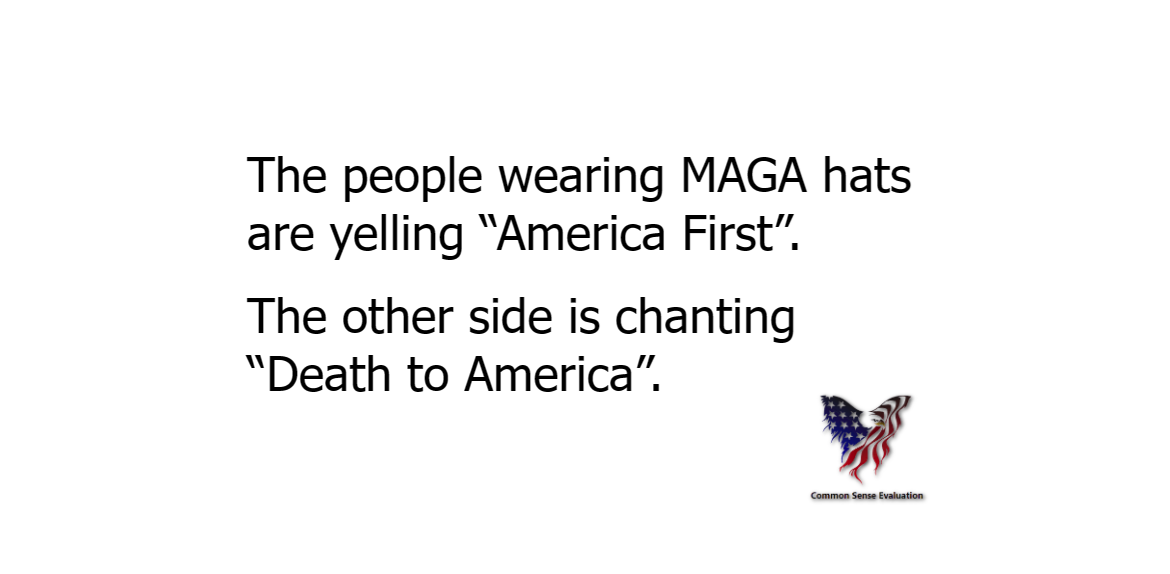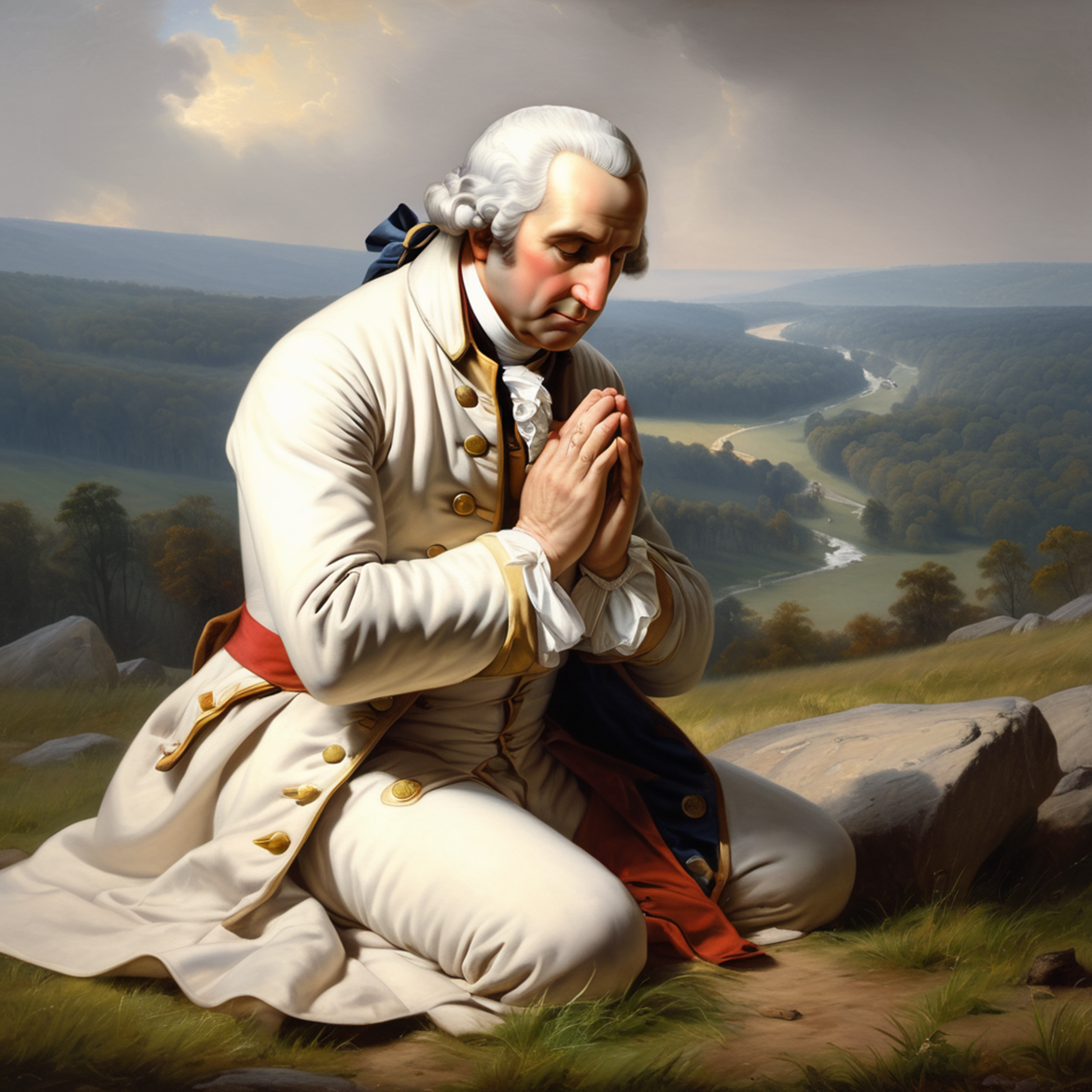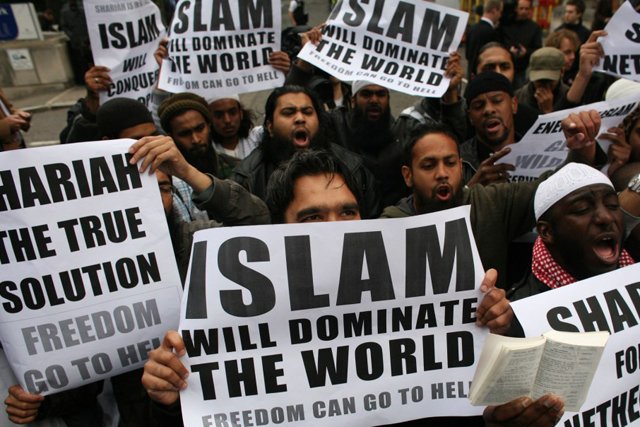By accepting millions of “refugees” from war torn countries into our countries, all we are doing is inviting their wars in along with them. Changing their location doesn’t change their ideology.
America First
George Washington’s Prophetic Dream
In the midst of war’s uncertainty and a young nation’s fragile hope, a story surfaced that would reach almost mythical status. This is the story of George Washington’s vision, a prophetic dream that was said to have been experienced by the very man who led America in its infancy. This tale wasn’t spread far and wide in the days right after it happened, but it waited nearly a century before becoming known when it was published in the National Tribune in December 1880.
The narrative of George Washington’s vision has intrigue, suspense, and a glimpse into what the future might hold. It’s a curious piece of American folklore that offers both a warning and a promise—it’s a story of America’s trials and its potential triumphs through the eyes of its first President.
A Glimpse into the Unknown
The vision, according to the storytelling, took place in the bitter winter of 1777, a winter that saw Washington and his troops weathering hard times at Valley Forge. Washington, worn by the weight of war and leadership, supposedly found some solitude and fell into a state of contemplation. It is here, at this moment of quiet reflection, that the vision is said to have occurred.
According to the tale, Washington saw a mysterious figure, perhaps an angel, who led him through a series of scenes showing the future of America. This shadowy visitor showed him three great events that would come to pass.
The Three Perils of America
The first scene revealed to Washington was America embroiled in another great struggle, this time within its own borders. It was the Civil War, where brother would fight against brother. In this vision, the young country was tested mightily but emerged united, a stronger nation forged from the flames of conflict.
Entranced by the vividness of the angelic vision, Washington then saw a second scene. This time, vast oceans separated America from its new adversary. Across these waters, he witnessed America at war once more, engaged in tremendous battles on foreign soil. This part of the vision rings true to what we now recognize as World Wars, where America played a crucial role in the victories over nations that threatened peace and democracy.
The third and final threat was the most mysterious and is often debated for its meaning. In this scene, chaos emerged within America’s borders once again—cities burned, and a great darkness smothered the land. Yet, from this darkness, hope would emerge. America would once again find its way, recovering from the brink and becoming a beacon of light to the rest of the world.
A Story of Resilience
The article that surfaced in the National Tribune many years later tells us more than just a story of Washington’s dream; it speaks to the collective hope and enduring spirit of America. Whether Washington really had such a vision is not the point. The story survived and was shared because it resonates on a deeper level—it’s about the belief in the resilience of a nation, the conviction that no matter the challenge, through unity and courage, America can and will overcome.
Why Does It Matter?
When the National Tribune published this account, it was a period of rebuilding and reflection. The country had recently endured the devastating Civil War and was still nursing the wounds of division and loss. The story of Washington’s vision offered comfort and a sense of destiny for a nation looking to rebuild and find its purpose again.
Even if the vision was more of a legend than a fact, the power it held was real. It acted like a lighthouse for the spirit of the country, guiding the collective heart of the nation toward the feeling that all struggles have a reason and a conclusion in sight.
Holding onto Hope
The story of George Washington’s vision is less about the mystic experience and more about what it represents. It illustrates the idea that America is meant to weather storms, to struggle, but ultimately to emerge stronger, unified, and with a deeper commitment to the principles of freedom and justice.
Not every day requires the revelation of an angel or the foresight of a vision. Sometimes, the most profound truths are found in the stories we choose to believe and the hope we choose to hold onto. As a nation, the journey is rarely simple or easy, but there is comfort in folklore that suggests our struggles are part of a larger, grander tapestry of destiny.
As readers in the 1880s devoured the words printed about the vision of their first leader, it gave them a sense of looking forward, past the difficulties, to grasp a collective belief that there was greatness ahead. It reaffirmed the American dream: the idea that no matter what hardships we face, we have the capability to rise above and find a brighter future.
This is where the value of the story of George Washington’s vision truly lies. Not in the predictive power of a dream, but in the enduring belief in the promise of the nation and the relentless pursuit of a more perfect union.
Muslim Terrorism Correlated With Population Size
Islam has religious, legal, political, economic, social, and military components. The religious component is a beard for all the other components.
Islamization begins when there are sufficient Muslims in a country to agitate for their religious privileges.
When politically correct, tolerant, and culturally diverse societies agree to Muslim demands for their religious privileges, some other components tend to creep in as well.
Here’s how it works.
As long as the Muslim population remains around or under 2% in any given country, they will be for the most part be regarded as a peace-loving minority, and not as a threat to other citizens. This is the case in:
United States — Muslim 0.6%
Australia — Muslim 1.5%
Canada — Muslim 1.9%
China — Muslim 1.8%
Italy — Muslim 1.5%
Norway — Muslim 1.8%
At 2% to 5%, they begin to proselytize from other ethnic minorities and disaffected groups, often with major recruiting from the jails and among street gangs. This is happening in:
Denmark — Muslim 2%
Germany — Muslim 3.7%
United Kingdom — Muslim 2.7%
Spain — Muslim 4%
Thailand — Muslim 4.6%
From 5% on, they exercise an inordinate influence in proportion to their percentage of the population. For example, they will push for the introduction of halal (clean by Islamic standards) food, thereby securing food preparation jobs for Muslims. They will increase pressure on supermarket chains to feature halal on their shelves — along with threats for failure to comply. This is occurring in:
France — Muslim 8%
Philippines — Muslim 5%
Sweden — Muslim 5%
Switzerland — Muslim 4.3%
The Netherlands — Muslim 5.5%
Trinidad & Tobago — Muslim 5.8%
At this point, they will work to get the ruling government to allow them to rule themselves (within their ghettos) under Sharia, the Islamic Law. The ultimate goal of Islamists is to establish Sharia law over the entire world.
When Muslims approach 10% of the population, they tend to increase lawlessness as a means of complaint about their conditions. In Paris, we are already seeing car-burnings. Any non-Muslim action offends Islam, and results in uprisings and threats, such as in Amsterdam, with opposition to Mohammed cartoons and films about Islam. Such tensions are seen daily, particularly in Muslim sections, in:
Guyana — Muslim 10%
India — Muslim 13.4%
Israel — Muslim 16%
Kenya — Muslim 10%
Russia — Muslim 15%
After reaching 20%, nations can expect hair-trigger rioting, jihad militia formations, sporadic killings, and the burnings of Christian churches and Jewish synagogues, such as in:
Ethiopia — Muslim 32.8%
At 40%, nations experience widespread massacres, chronic terror attacks, and ongoing militia warfare, such as in:
Bosnia — Muslim 40%
Chad — Muslim 53.1%
Lebanon — Muslim 59.7%
From 60%, nations experience unfettered persecution of non-believers of all other religions (including non-conforming Muslims), sporadic ethnic cleansing (genocide), use of Sharia Law as a weapon, and Jizya, the tax placed on infidels, such as in:
Albania — Muslim 70%
Malaysia — Muslim 60.4%
Qatar — Muslim 77.5%
Sudan — Muslim 70%
After 80%, expect daily intimidation and violent jihad, some State-run ethnic cleansing, and even some genocide, as these nations drive out the infidels, and move toward 100% Muslim, such as has been experienced and in some ways is ongoing in:
Bangladesh — Muslim 83%
Egypt — Muslim 90%
Gaza — Muslim 98.7%
Indonesia — Muslim 86.1%
Iran — Muslim 98%
Iraq — Muslim 97%
Jordan — Muslim 92%
Morocco — Muslim 98.7%
Pakistan — Muslim 97%
Palestine — Muslim 99%
Syria — Muslim 90%
Tajikistan — Muslim 90%
Turkey — Muslim 99.8%
United Arab Emirates — Muslim 96%
100% will usher in the peace of ‘Dar-es-Salaam’ — the Islamic House of Peace. Here there’s supposed to be peace, because everybody is a Muslim, the Madrases are the only schools, and the Koran is the only word, such as in:
Afghanistan — Muslim 100%
Saudi Arabia — Muslim 100%
Somalia — Muslim 100%
Yemen — Muslim 100%
Unfortunately, peace is never achieved, as in these 100% states the most radical Muslims intimidate and spew hatred, and satisfy their bloodlust by killing less radical Muslims, for a variety of reasons.
‘Before I was nine, I had learned the basic canon of Arab life. It was me against my brother; me and my brother against our father; my family against my cousins and the clan; the clan against the tribe; the tribe against the world, and all of us against the infidel. — Leon Uris, ‘The Haj’
It is important to understand that in some countries, with well under 100% Muslim populations, such as France, the minority Muslim populations live in ghettos, within which they are 100% Muslim, and within which they live by Sharia Law. The national police do not even enter these ghettos. There are no national courts, nor schools, nor non-Muslim religious facilities. In such situations, Muslims do not integrate into the community at large. The children attend madrases. They learn only the Koran. To even associate with an infidel is a crime punishable with death. Therefore, in some areas of certain nations, Muslim Imams and extremists exercise more power than the national average would indicate.
Today’s 1.5 billion Muslims make up 22% of the world’s population. But their birth rates dwarf the birth rates of Christians, Hindus, Buddhists, Jews, and all other believers. Muslims will exceed 50% of the world’s population by the end of this century.
Adapted from Dr. Peter Hammond’s book: Slavery, Terrorism and Islam: The Historical Roots and Contemporary Threat
This is scary. Here is some serious reading for serious thinkers.
Now that you know what we will do with this knowledge?




